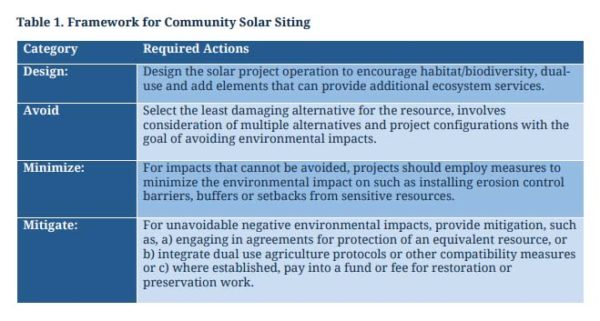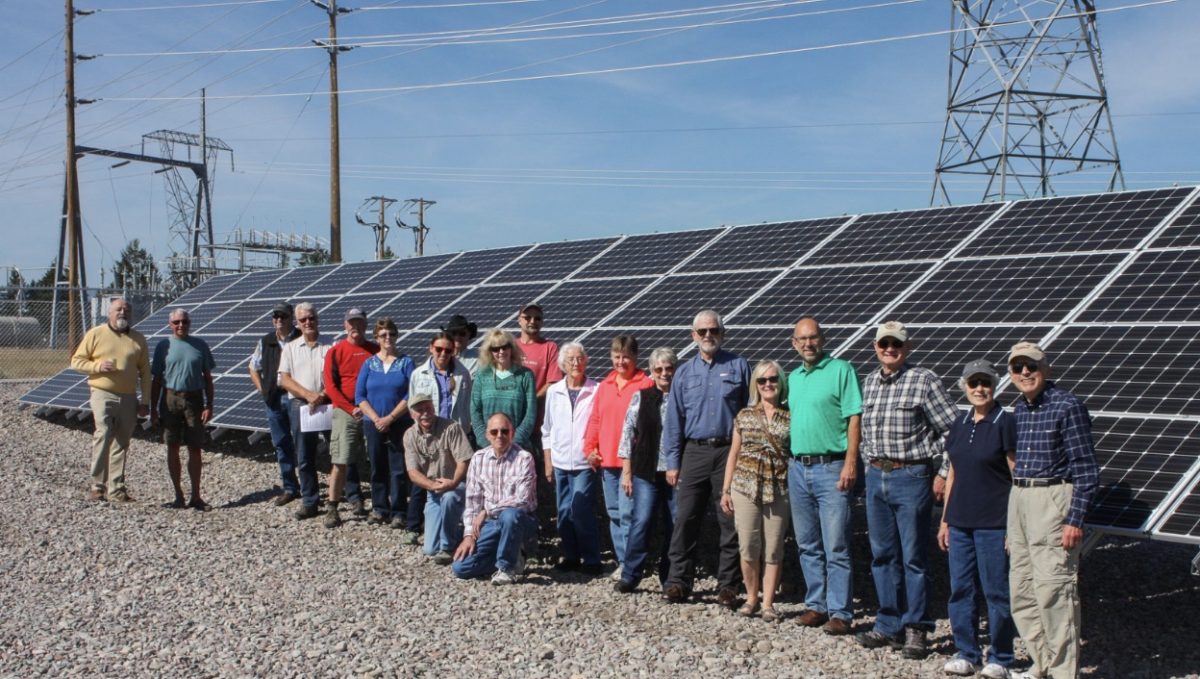Community solar is a fast-growing sector of the US electricity industry, with more than 3.6GW of these solar projects operating across the country at the end of third quarter of 2021. According to a recent Wood Mackenzie report, and the next five years is expected see the community solar market add another 4.5GW of capacity. The National Community Solar Partnership, a Department of Energy program, set an ambitious goal of enabling enough community solar projects to power the equivalent of 5 million households, and achieve $1 billion in combined energy bill savings.
To help meet these clean energy goals, SEIA released a white paper that proposes a siting framework for community solar projects that can produce carbon-free electricity, while enhancing ecosystems and conserving land. The framework builds off existing laws to balance development activity with environmental protection.
While community solar typically uses less land than utility-scale solar installations, siting and permitting smaller installations of up to 5MW can stir up local and statewide debates about managing solar development and protecting community character. Often the debate can be based on ill founded or uninformed opinions pitted against concerns about potential land use impacts and the need to preserve community character. These concerns are legitimate considering that, although lands for solar projects today make up a tiny fraction of the nearly 81 million acres of land across the nation dedicated to energy production, land taken up by renewables projects will need to grow significantly to achieve a carbon-free grid.
SEIA’s aim in this paper is to advance a process-based approach that balances the need for permitting many more community solar farms, with protecting property rights and sensitive ecosystems.
The paper is predicated on three underlying assumptions:
- There is already an extensive body of existing federal and state law that protects and prohibits development on sensitive eco-systems. Therefore, decision makers should not “reinvent the wheel” by adding new restrictions based on the existence of this already robust set of protections.
- State regulators should develop frameworks and up-to-date, publicly accessible, land use mapping tools available to help local governments in making permitting decisions.
- Finally, solar development can be compatible with conservation and preservation of community character provided that the recommendations of this framework are followed.
The SEIA framework details how to design for ecosystem services and how to avoid, minimize, and mitigate potential negative impacts.

Overall the framework recommends taking a fact-based approach while also considering pre-determined zones for solar development, as well as wildlife, forests and agricultural lands.
This content is protected by copyright and may not be reused. If you want to cooperate with us and would like to reuse some of our content, please contact: editors@pv-magazine.com.









By submitting this form you agree to pv magazine using your data for the purposes of publishing your comment.
Your personal data will only be disclosed or otherwise transmitted to third parties for the purposes of spam filtering or if this is necessary for technical maintenance of the website. Any other transfer to third parties will not take place unless this is justified on the basis of applicable data protection regulations or if pv magazine is legally obliged to do so.
You may revoke this consent at any time with effect for the future, in which case your personal data will be deleted immediately. Otherwise, your data will be deleted if pv magazine has processed your request or the purpose of data storage is fulfilled.
Further information on data privacy can be found in our Data Protection Policy.